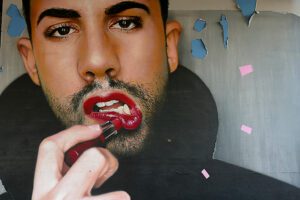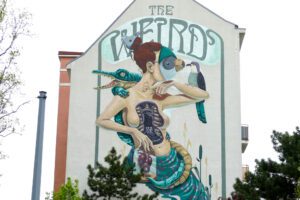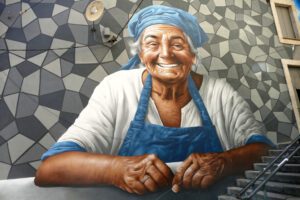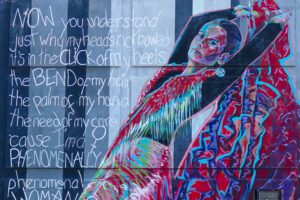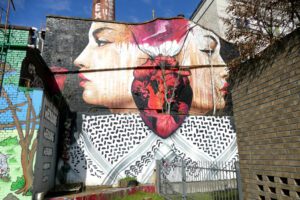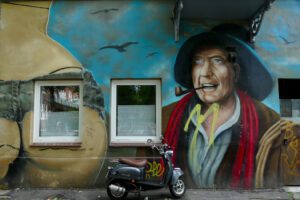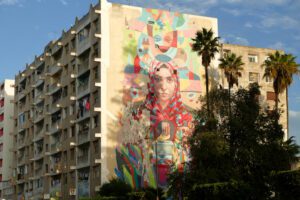While Palermo as such is very much underrated, also the city’s best street art thrives in the shadows. Very unjustly so!
In this post, I’m taking you on a tour of the city’s hotspots for urban art.
Prepare for some truly powerful murali!
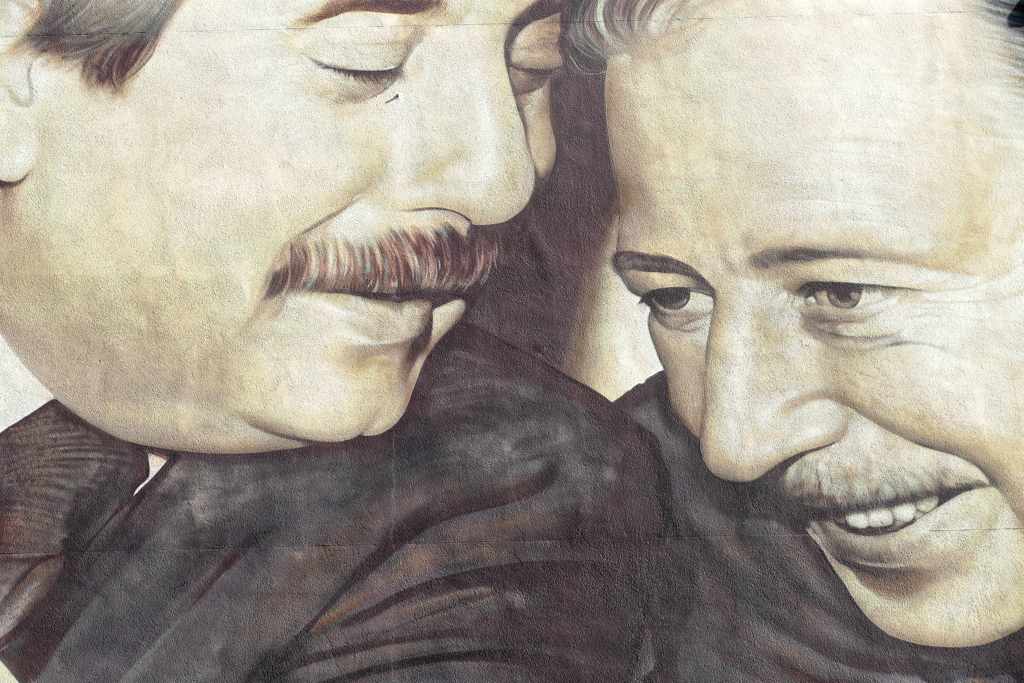
Palermo
With almost 650,000 inhabitants, Palermo is not only the political and cultural center of Sicily but also Italy’s fifth-largest city. The Phoenicians founded the city as a trading post in the 8th century BC. In contrast to other large cities in Sicily, Palermo never came under Greek rule, but was located near the border with the Greek-speaking eastern part of the island. No matter what, the city looks back at a rich and eventful history.
However, Palermo’s more recent years were also quite eventful, yet not in a good sense. From the end of WWII to the end of the 20th century, Palermo was firmly in the hands of the Mafia. It was the scene of two major mafia wars and was one of the most violent cities in Europe. This destabilized the city politically, but also economically.
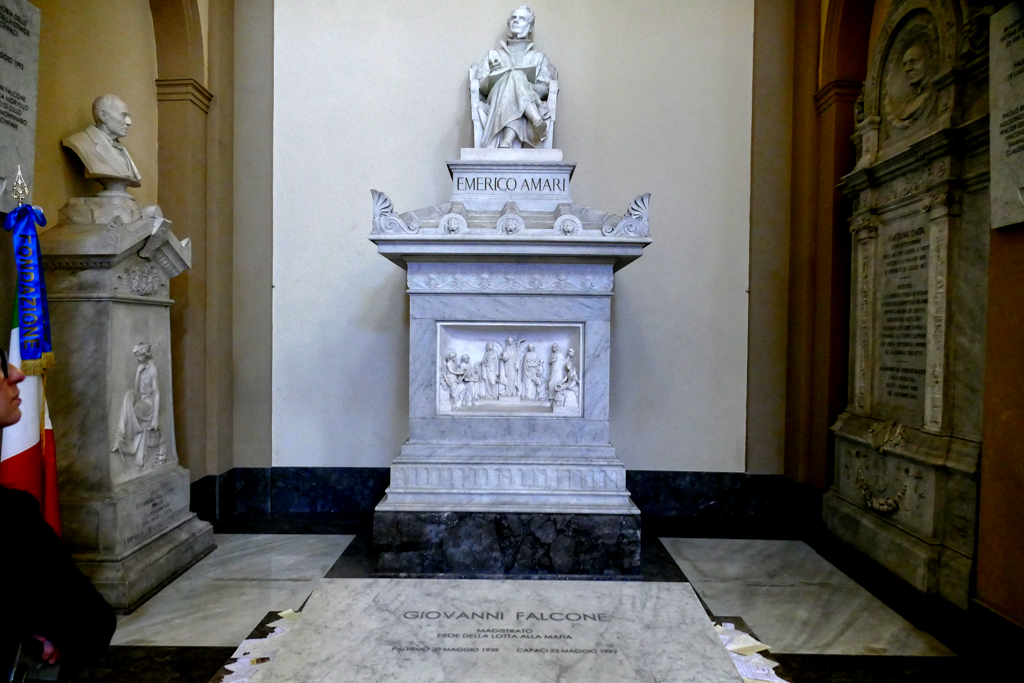
All those beautiful palaces deteriorated, the streets became dull, dirty, and dangerous. In the 1980s, prosecutors Giovanni Falcone and Paolo Borsellino in particular fought against it. Sadly, both were murdered by the mafia in quick succession near Palermo in 1992.
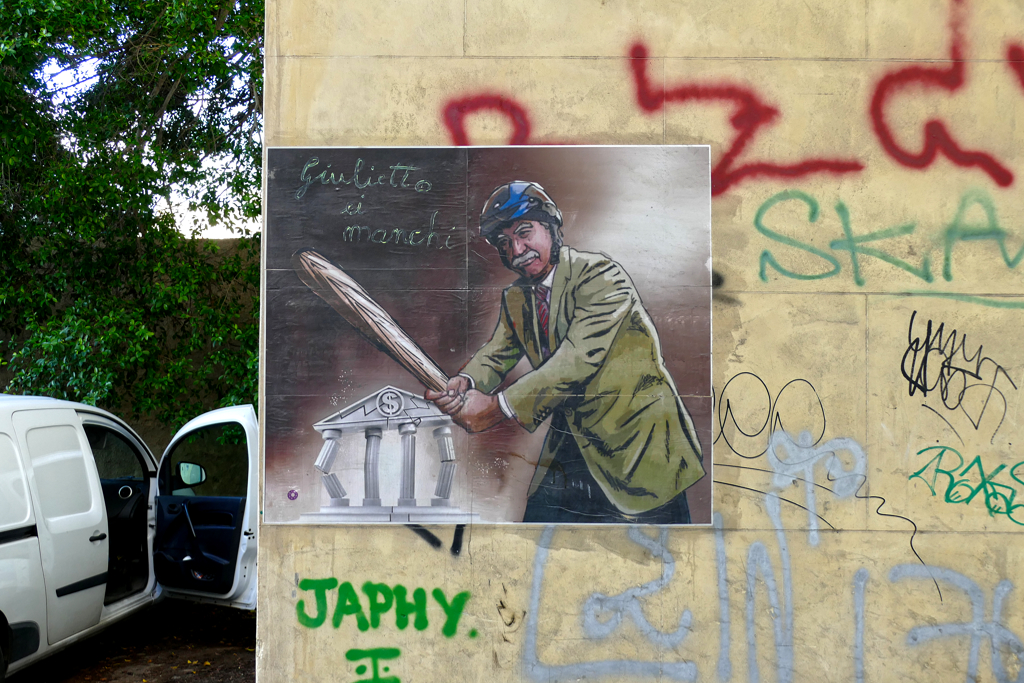
Giulietto, we miss you, says the poster showing Giulietto Chiesa smashing into a palace of capitalism. Chiesa was a journalist and author as well as a member of the European Parliament.
Nonetheless, during Mayor Leoluca Orlando’s long tenure from 1985 to 2022, there was a dramatic improvement in public life in the city. Supported by politicians, artists, and the population, he fought resolutely against the mafia. Crime fell, and today, Palermo is considered the safest city in Italy.
Palermo Today
Nevertheless, Palermo still faces significant economic and social challenges. The city, like Sicily as a whole, struggles with structural economic weaknesses, including high levels of bureaucracy, corruption, and ineffective infrastructure. Unemployment is high, particularly among young people, who are often forced to leave the island in search of better opportunities.
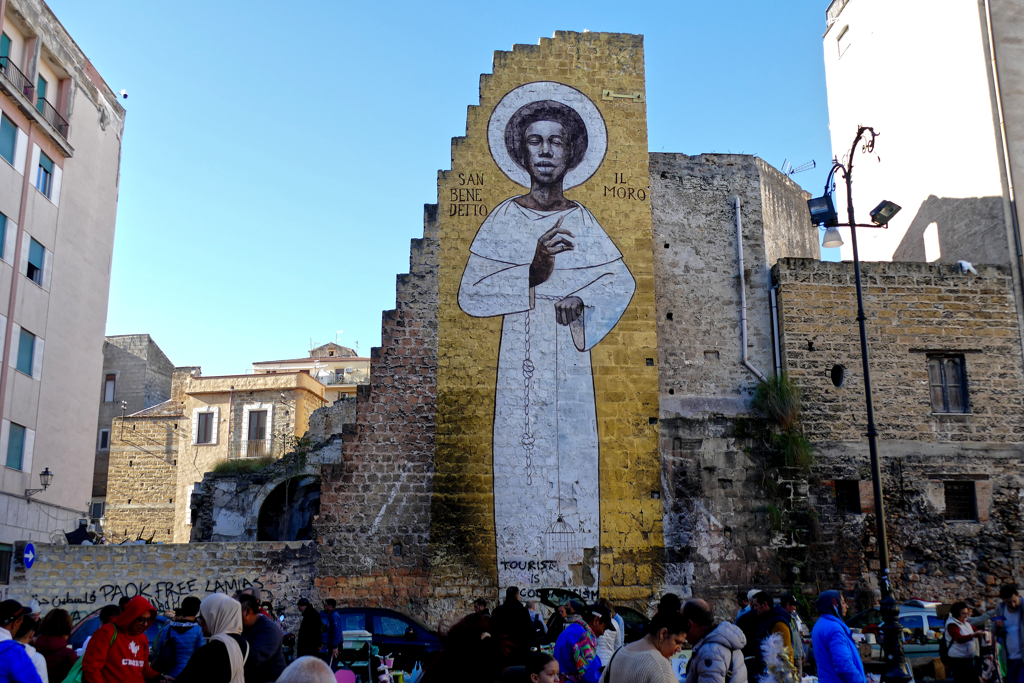
Obviously, there are districts more affected by economic and social problems than others. And after I’ve been roaming the cities of the world for years in search of the best street art, I’m not surprised to have found the most powerful murals here. After all, in many cities around the globe, the modern-day graffiti movement started in the 1960s as a claim of urban territory by gangs but also as a response to political and social injustice. Graffiti developed from the so-called tagging, hence writing names’n’slogans in a more or less artsy way, to painting beautiful murals that transformed neighborhoods in open-air galleries and helped improve the living conditions.
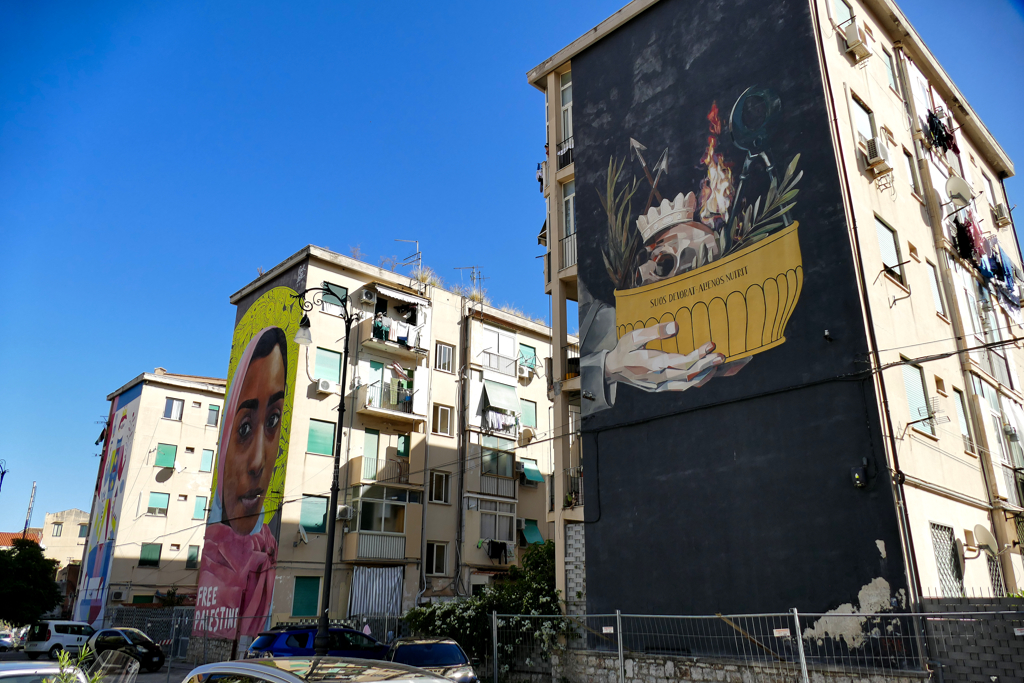
Today, groups of tourists push their way through the gentrified and therefore tragically hip districts of Camden and Shoreditch, which once was London’s cradle of punk.
On the other hand, districts such as the 13th arrondissement in Paris, Copenhagen’s Nordvest neighborhood, the satellite town of San Pablo in the northeast of Seville, as well as some impoverished neighborhoods in Nîmes, are visually enhanced through murals as a first step and thereby made more livable in the long run.
I wouldn’t go so far as to say that street art is structurally changing Palermo. However, it was touching how people visiting the market on a Sunday morning in Albergheria proudly pointed out the beautiful murals.
Street Art in Ballarò and Albergheria
Ballarò and Albergheria are two districts particularly affected by economic and social problems. Although these neighborhoods are known for their vibrant markets, they also suffer from poverty, crime, and a high proportion of the informal economy. Many migrants and refugees live here, often in overcrowded and poor living conditions. However, it’s on the crumbling walls of Ballarò and Albergheria where I spotted the most intriguing and powerful murals.
Igor Scalisi Palminteri
A street artist that no one can miss in Palermo is Igor Scalisi Palminteri. Palminteri was born in Palermo in 1973. At the age of 20, he joined the Capuchin order, where he remained for seven years. Given his background, it is not surprising that sacred motifs are a recurring theme in his work. He often depicts saints as simple people.
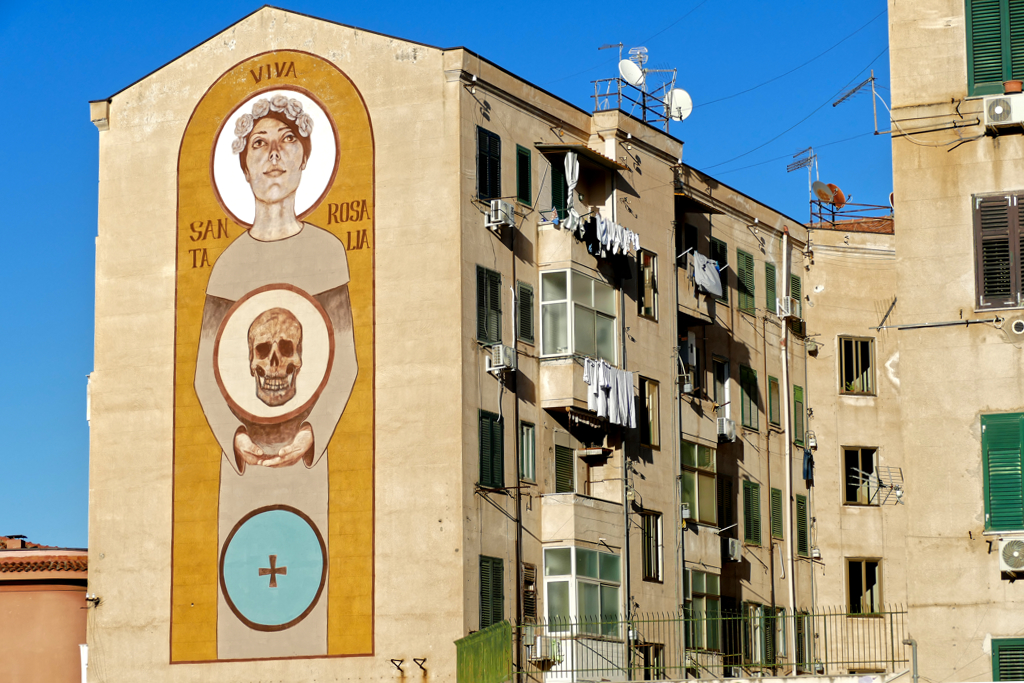
A tribute to the patron saint of Palermo
Palminteri holds a Master of Arts from the Academy of Fine Arts in Palermo and has exhibited his paintings in Italy and abroad.
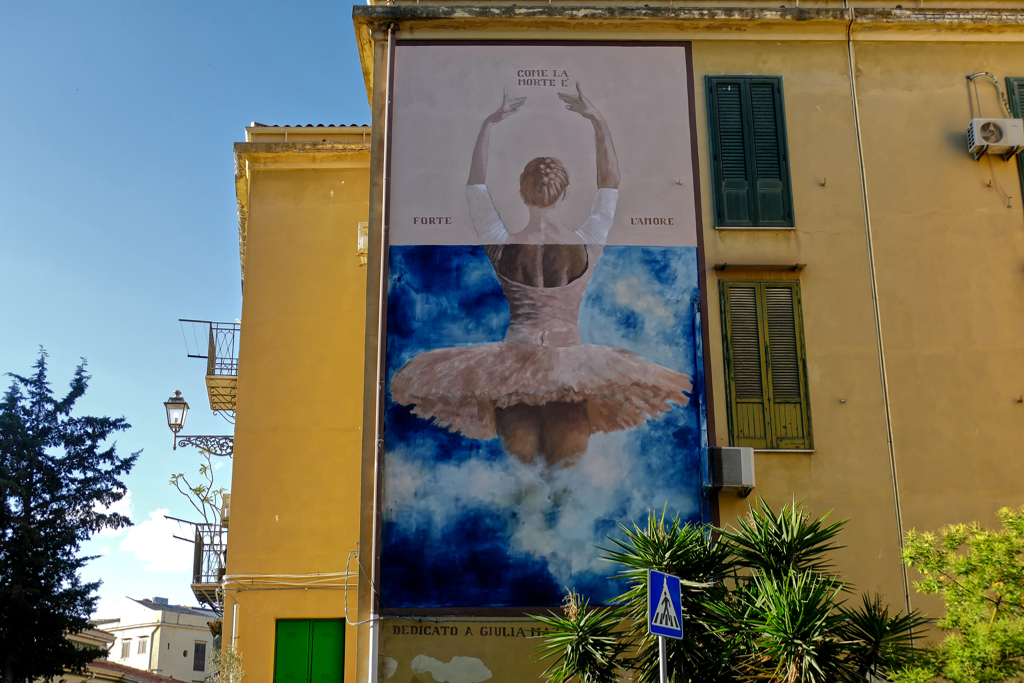
Where Art is Far More Than Just A Captivating Painting
Since 2018, he has devoted himself almost exclusively to street art. He works closely with residents to spread a sense of community through joint work. In this way, his murals become part of the cultural heritage of the respective districts. In addition, in collaboration with schools and social services, he initiated several workshops for children and young people from unstable social backgrounds.
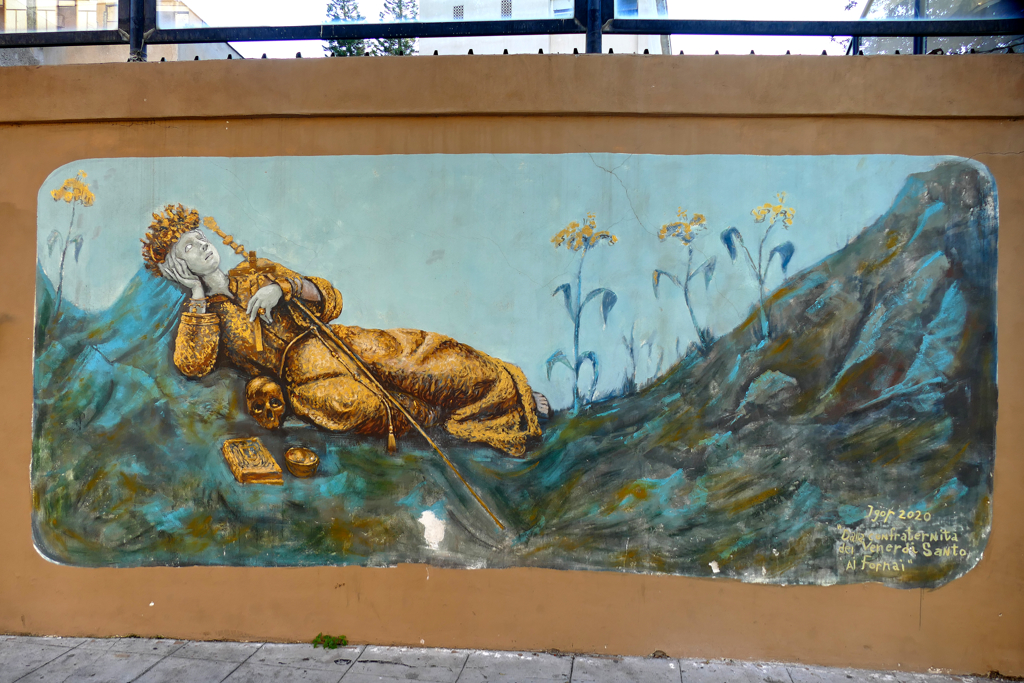
In an art project in the Ballarò district, he brought together four other artists, namely Andrea Buglisi, Alessandro Bazan, Fulvio Di Piazza, and Crazyone, to spruce up the run-down area with five stunningly painted walls.
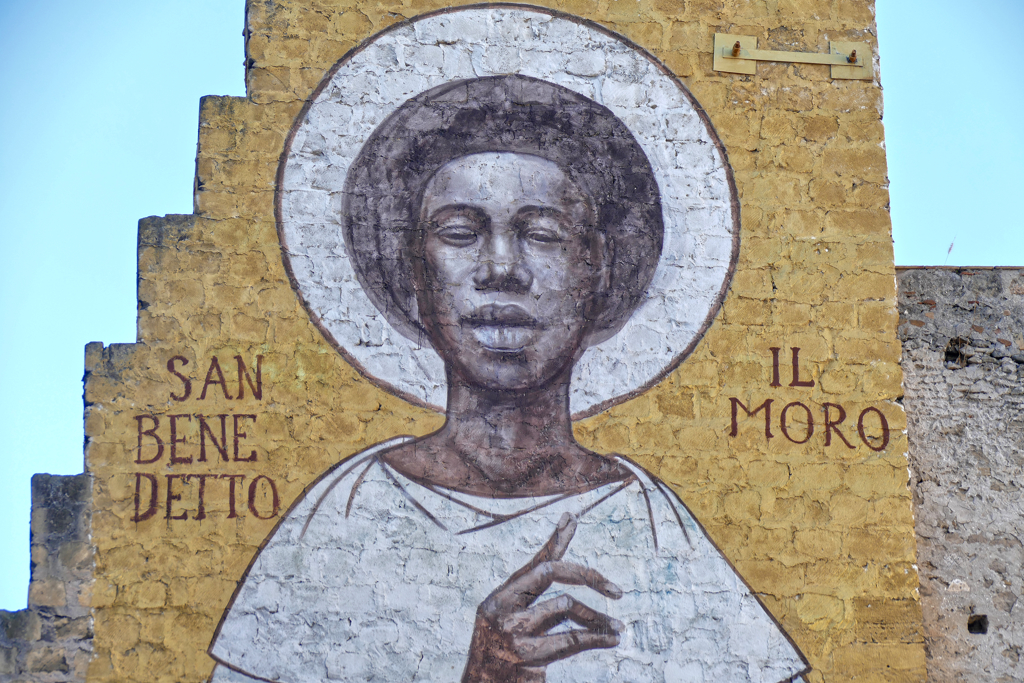
The initiative did not just focus on beautifying the district, obviously. A documentary of this initiative, called Prospettiva Ballarò, is still available to stream on Netflix to this date.
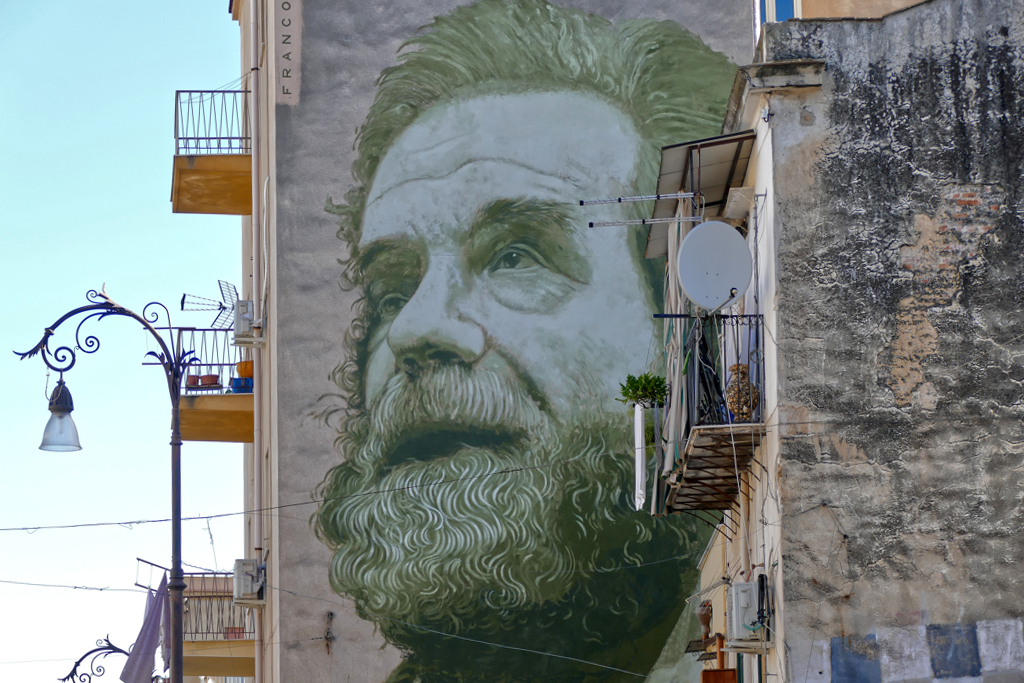
Portrait of Palermese poet Franco Scaldati.
In addition, the documentary The Most Useless Seagull in the World was released in 2022. The camera accompanies Palminteri into his studio, to his favorite places, and to the underdeveloped areas that he enhances with his urban art interventions. It is available on Amazon Prime.
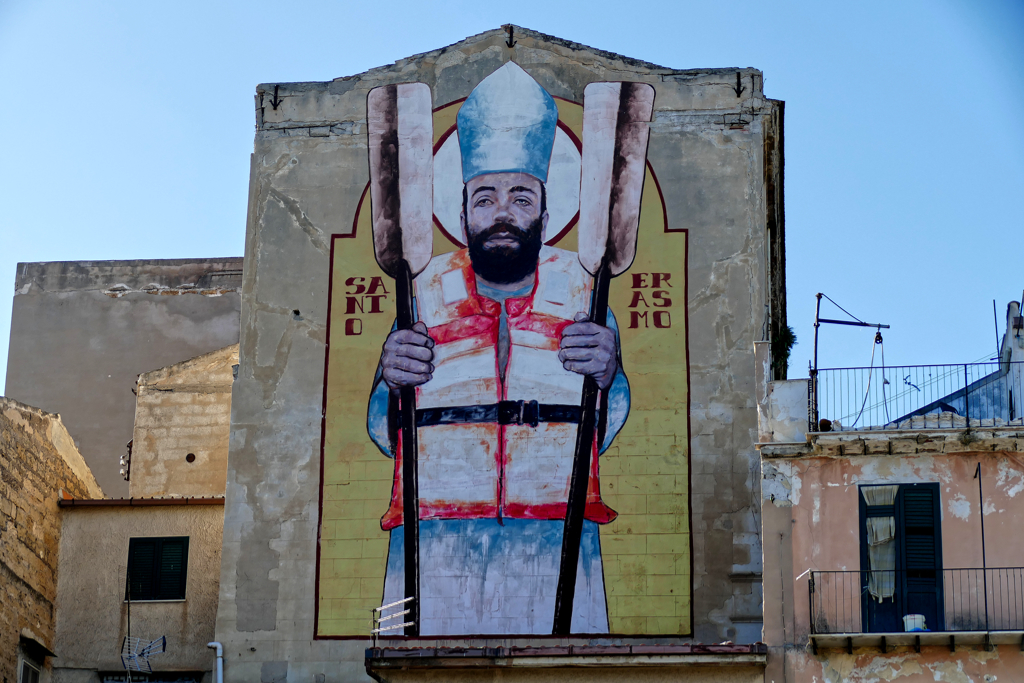
The artist captions this mural with the very touching words: “This painting is dedicated to all the women and men who save our sisters and brothers at sea. We dream of a world without borders.” Amen!
Andrea Buglisi
Andrea Buglisi is a visionary Sicilian artist born in Palermo in 1974. A graduate of the Academy of Fine Arts with a degree in Decoration, his passion for Street Art culminated in a groundbreaking thesis in 1998. He brings a dynamic fusion of creativity and social commentary to his work. Since 2005, Buglisi has shared his expertise as a Painting Disciplines teacher at the Liceo Artistico E. Catalano in Palermo.
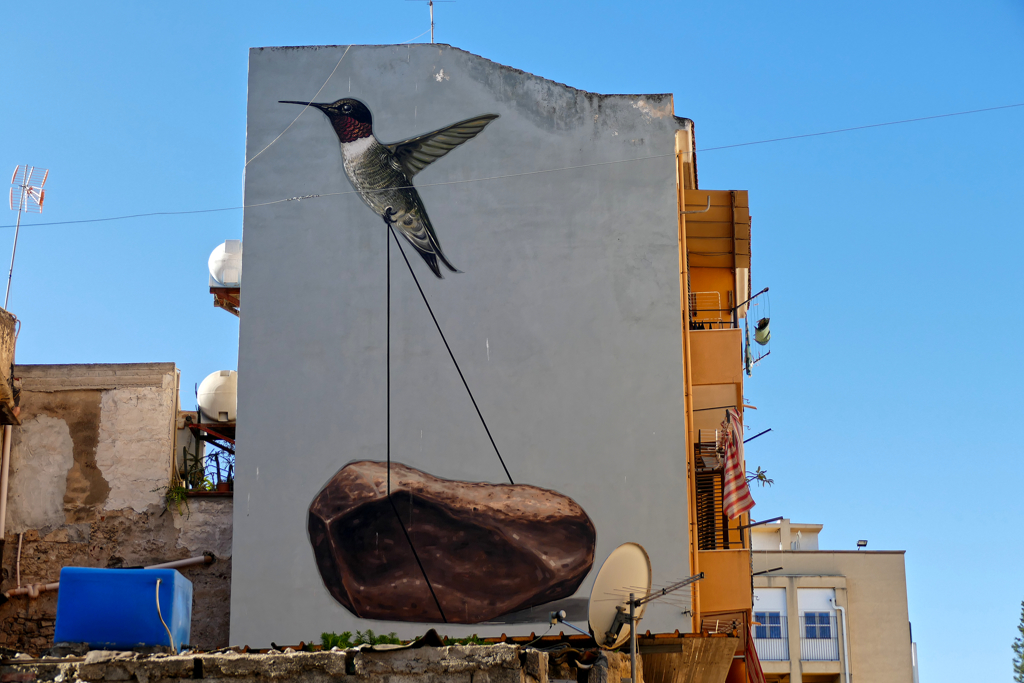
One of five urban paintings that were painted in the Albergheria neighborhood in a project initiated by Igor Scalisi Palminteri and Andrea Buglisi in 2018.
Just like Igor Scalisi Palminteri, Buglisi is deeply involved in urban renewal projects. He skillfully draws viewers in with vibrant colors and captivating compositions. Yet, beneath this enticing surface lies a layer of unease. Through the lens of irony, his works challenge societal norms, exposing the conventions and collective anxieties of modern life.
Buglisi’s art boldly tackles social and political themes, blending realism with surreal and symbolic elements. His pieces delve into profound topics, offering a poignant reflection of urban existence. Drawing inspiration from history, literature, and pop culture, he crafts intricate, emotionally resonant works that invite viewers to explore complex ideas while delighting in his bold aesthetic.
Twenty Three
Twenty Three, a vibrant street artist hailing from Cyprus, has been making waves in the art world since 2012. Known for his mastery of stencil techniques, his creative pursuits extend far beyond the streets. He dives into participatory art projects, vibrant illustrations, interactive installations, and even the intricate cyanotype printing process.
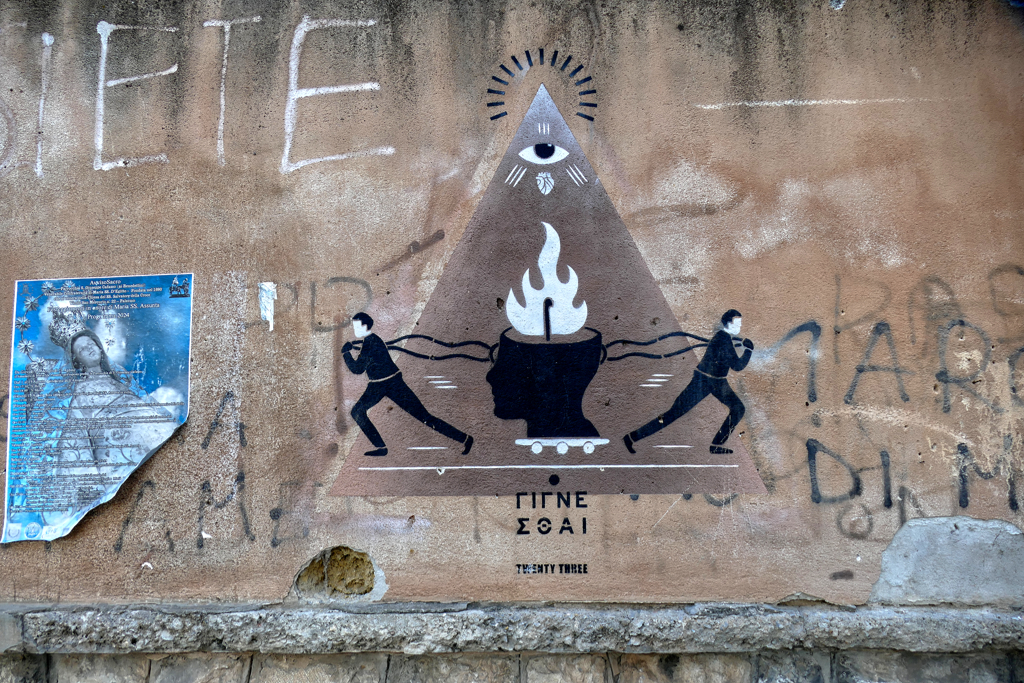
A central theme running through Twenty Three’s work is the exploration of transformative identities, navigating the delicate balance between tradition and modernity on both local and global scales.
However, the artist isn’t just about decorating walls with his distinct and compelling style. He also channels his talent into fostering social growth, offering workshops that empower communities and inspire creativity.
Twenty Three has left an indelible mark in Great Britain, Italy, Mexico, and Spain.
Angelo Crazyone
Angelo Crazyone was born in the Sicilian commune of Caltanissetta in 1990. He is celebrated for his spectacular stencil-based murals. With roots in the Istituto Statale d’Arte and a refined education from the Accademia di Belle Arti in Palermo, Crazyone’s journey into the vibrant world of urban art began in 2003. By 2006, his talent had already earned him a place in major conventions and collective exhibitions, showcasing his work far and wide in various cities around Italy but also in London.
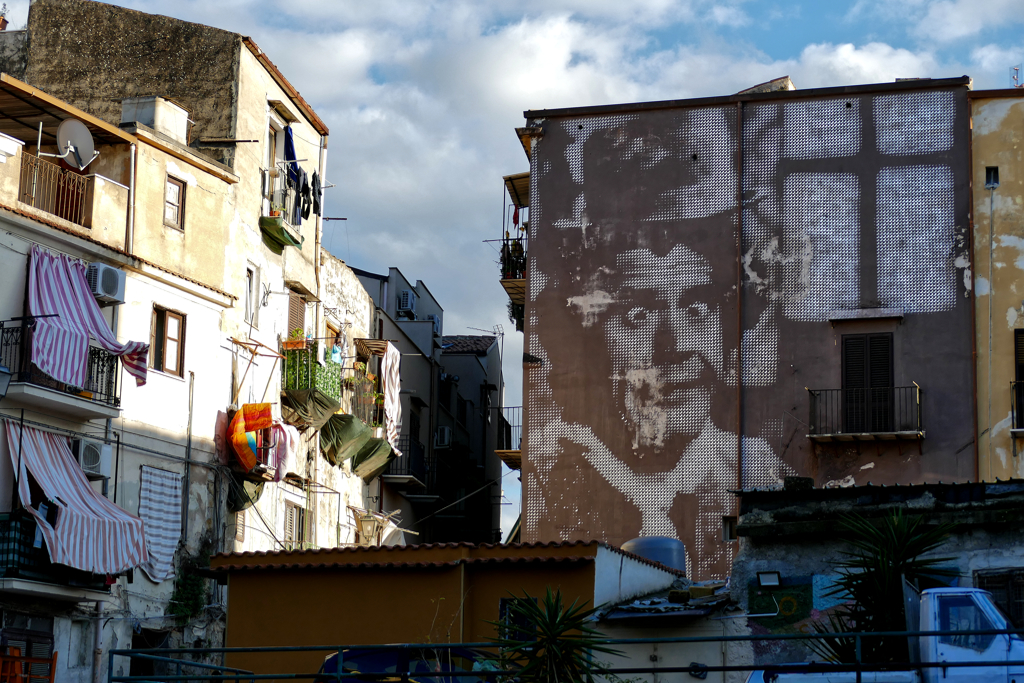
What sets Crazyone apart is his extraordinary artistic approach. Meticulous and methodical, he defies the traditional quick bursts of street art by crafting intricate, geometric stencils that are nothing short of mesmerizing. Up close, his pieces may seem like chaotic tangles of lines and dots, but step back, and they reveal stunningly coherent images. This creative genius lies in his technique of deconstructing and reconstructing images through a grid-like system, masterfully intertwining destruction and creation.
One of his latest standout masterpieces is a mural dedicated to Santa Rosalia, the patron saint of Palermo. Unveiled in Piazza Sant’Anna al Capo in September 2024, this stunning piece marries traditional reverence with modern artistry, beautifully embodying the heartfelt devotion of the Palermitan people.
Crazyone continues to redefine urban spaces, turning forgotten corners into vibrant canvases bursting with cultural identity and poignant social messages. His work isn’t just about aesthetics. It’s about storytelling, transformation, and a profound connection with places’n’people.
Vincenzo Suscetta
Vincenzo Suscetta is a skilled painter and muralist based in Palermo. Born in Turin in 1987, he spent his formative years in Southern Italy, where the rich tradition of sacred art and the vibrant colors of the Mediterranean left a lasting mark on his distinctive style.
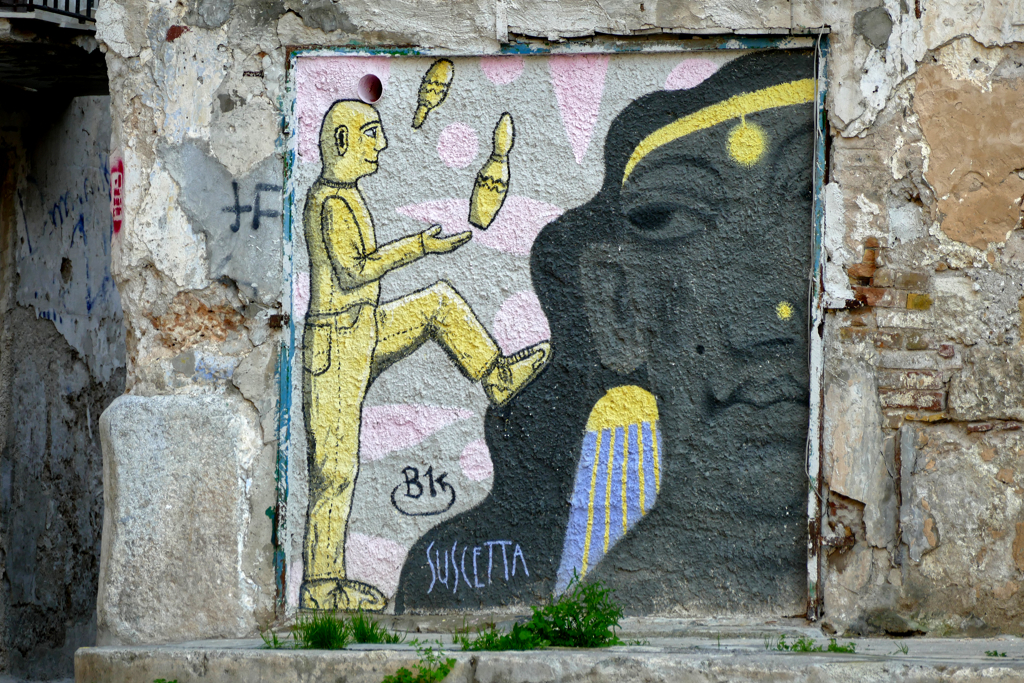
A graduate of the prestigious Accademia di Belle Arti di Brera in Milan, Suscetta’s work has been showcased both across Italy and internationally. His art delves deeply into themes of identity and the reinterpretation of the human form, drawing inspiration from ancestral myths, timeless fables, and religious symbolism. His ability to merge bold, simple aesthetics with layered, complex narratives creates a fascinating dialogue between classical and contemporary art.
In recognition of his talent, Suscetta received the Mediterranean Contemporary Art Prize for Graphics and Illustration in 2021.
Antonio Curcio aka B1
Antonio Curcio, better known as B1, is a dynamic and influential street artist hailing from the heart of Palermo. Starting his journey with stencil art, B1 quickly expanded his creative horizons, embracing bold and spontaneous techniques that set his work apart from the crowd.
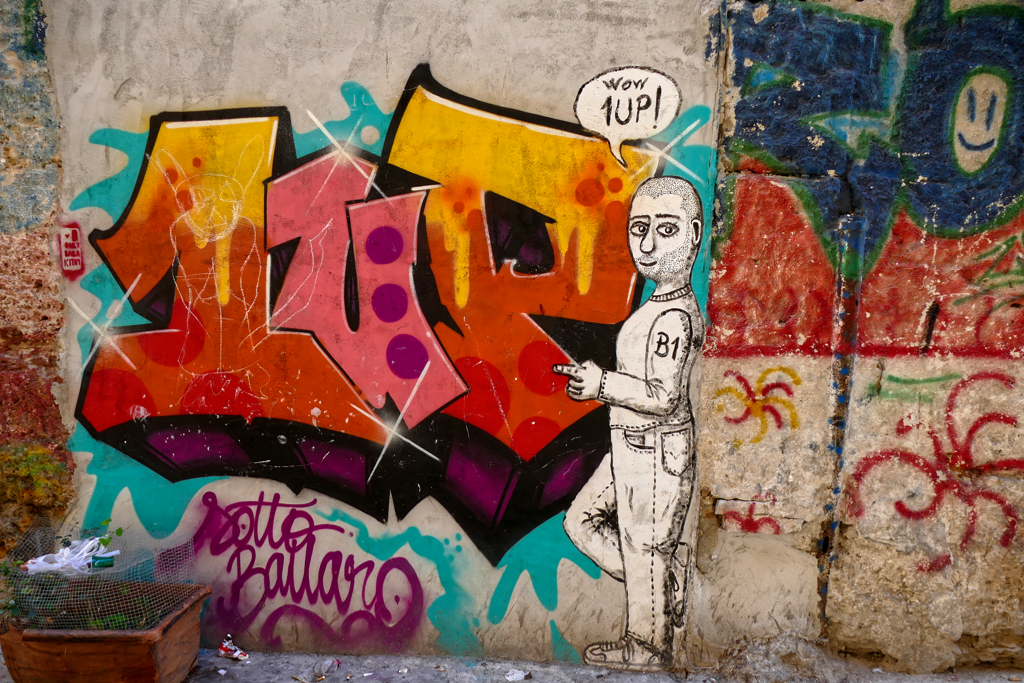
One of his most striking innovations involves hand-painting intricate designs on ceramic tiles, which he skillfully places on walls throughout Palermo. This distinctive method has not only made his art instantly recognizable but has also infused the city’s streets with a unique and vibrant energy, contributing to Palermo’s ever-evolving street art scene.
B1’s creations are more than just visually captivating—they’re thought-provoking. Tackling pressing social and political issues, his work sparks meaningful dialogue and reflection. A standout example is his poignant piece Tears for Palestine, which highlights his passion for addressing global challenges through the power of art.
From the historic alleys of Ballarò to the iconic streets of Kalsa, B1’s murals have become an integral part of Palermo’s cultural and visual identity. His groundbreaking approach and powerful messages have cemented his place as a trailblazer in the world of street art, leaving an indelible mark on the city’s urban landscape.
Yuri Romagnoli (Hopnn)
From Antonio Curcio, there is a seamless transition to Yuri Romagnoli, as these two artists worked together so harmoniously on several works. Sometimes, it’s actually difficult to tell who created which part. However, Curcio helps a little by marking his casual characters with a clear B1, and Romagnoli’s characters are decorated with an additional dash of red.
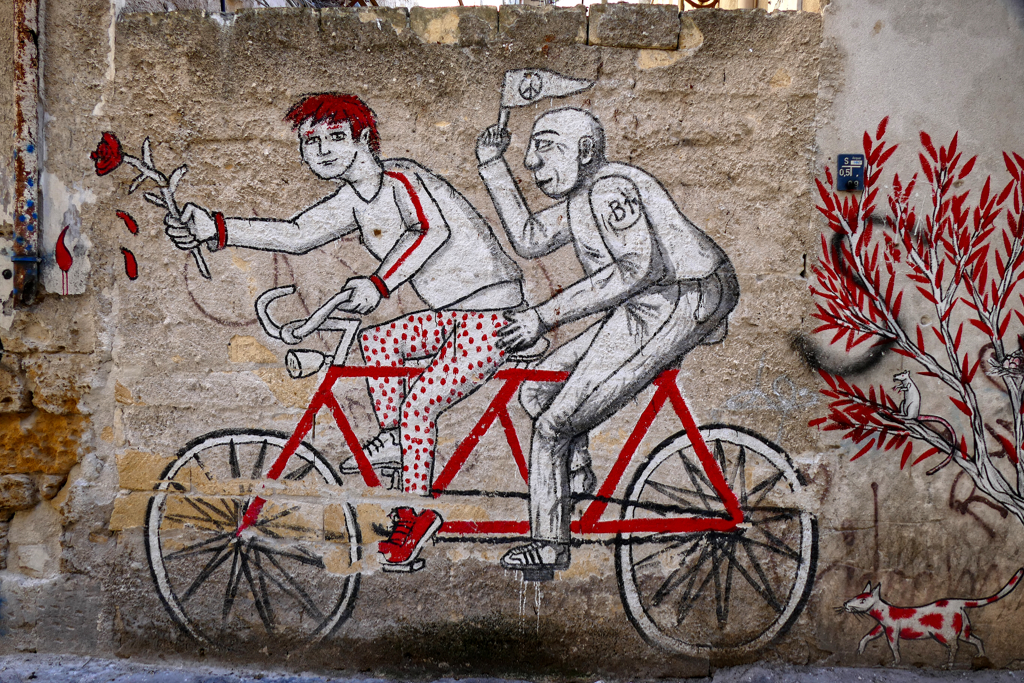
Yuri Romagnoli was born in Ancona in 1981. As a teenager, he loved the art of graffiti. From 2005 to 2008, he studied drawing, screen printing, engraving, and linocut at the Beaux-Arts in Rome.
After exploring different techniques and all types of media, he distinguished himself with a series of monumental murals.
From 2006 to 2008 he published the monthly fanzine Il Piatto together with other illustrators.
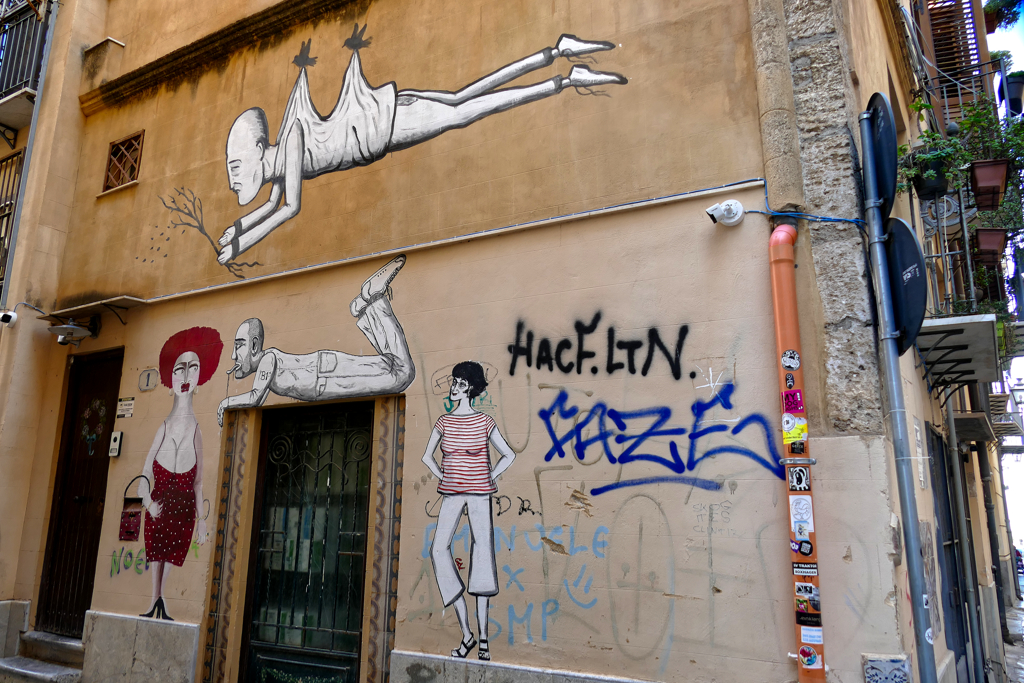
Yuri Romagnoli lives and works in Paris, where he occasionally teaches street art techniques to teenagers. He is co-founder and technical and artistic director of the Laszlo Biro art gallery, whose aim is to promote street art in Rome.
Romagnoli paints on the walls of major global cities such as Barcelona, Berlin, London, New York, and Paris. Through his work, he is particularly committed to environmental protection. Hence, it’s fitting that bicycles are a recurring motif in his creations.
Ema Jons
Ema Jons’s story begins in the enchanting northern Italian town of Como, where he was born in 1985. But it’s in Palermo where his artistic soul truly flourished, leaving an unmistakable mark on the vibrant streets of the Ballarò and Kalsa districts.
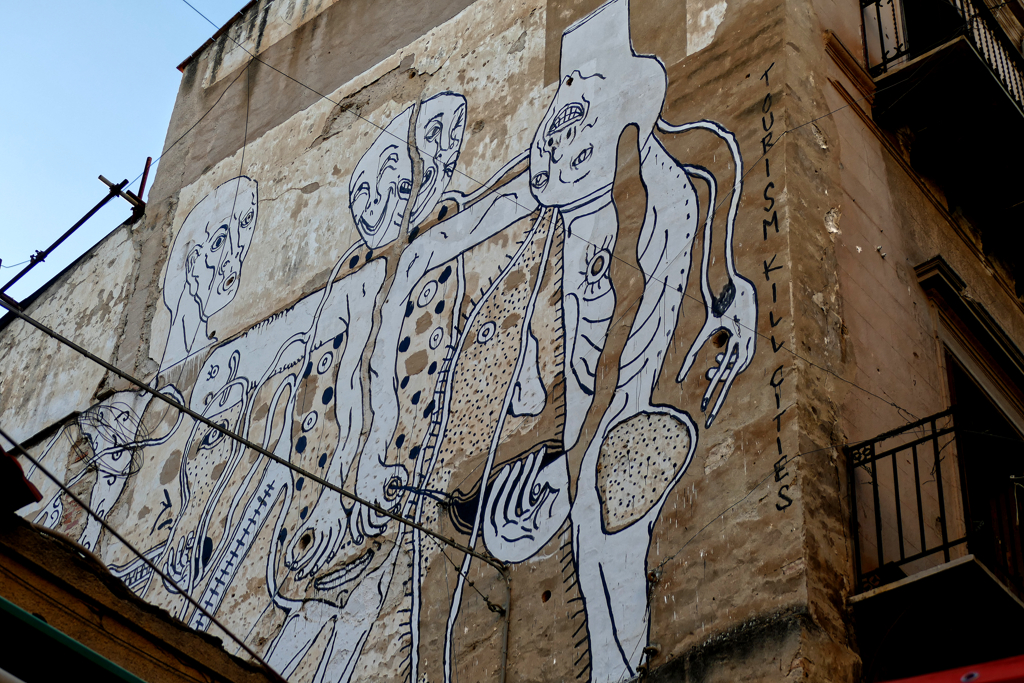
From the tender age of six, Ema’s journey as a street artist began most mischievously by drawing on walls with chalk taken from his school. That playful spirit has never left him, shining through in his surrealist characters, brought to life with quick, daring strokes. These creations, bursting with bold, springy energy, leap off the walls in a celebration of bold color. It’s as if Ema has distilled Picasso’s inventive forms and blended them with the raw, emotional intensity of expressionism.
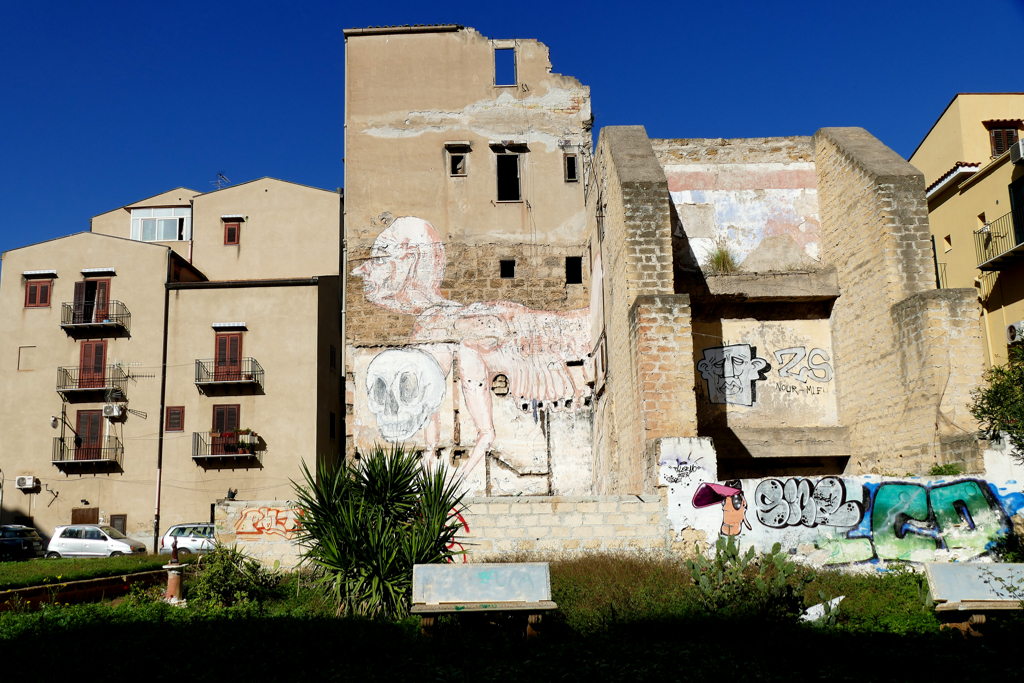
Though his roots are firmly planted in graffiti and street art, Ema is an artistic polymath. He paints, he draws, he sculpts—always pushing boundaries and exploring new horizons. His work transforms the ordinary into the fantastic, radiating creativity and passion with every stroke, splash, and shape.
Street Art in Kalsa
Palermo’s Kalsa district is one of the city’s most historic and culturally significant areas. Its story spans centuries, reflecting Palermo’s diverse influences and transformations. The Kalsa was established during the 9th–11th centuries when the Arabs ruled in Sicily. It was a fortified citadel and the administrative center of the Emirate of Sicily. After the Norman conquest in 1072, the area retained its prominence but saw the introduction of Christian elements and modifications to its architecture. Over time, the Kalsa evolved under the various successive rulers.
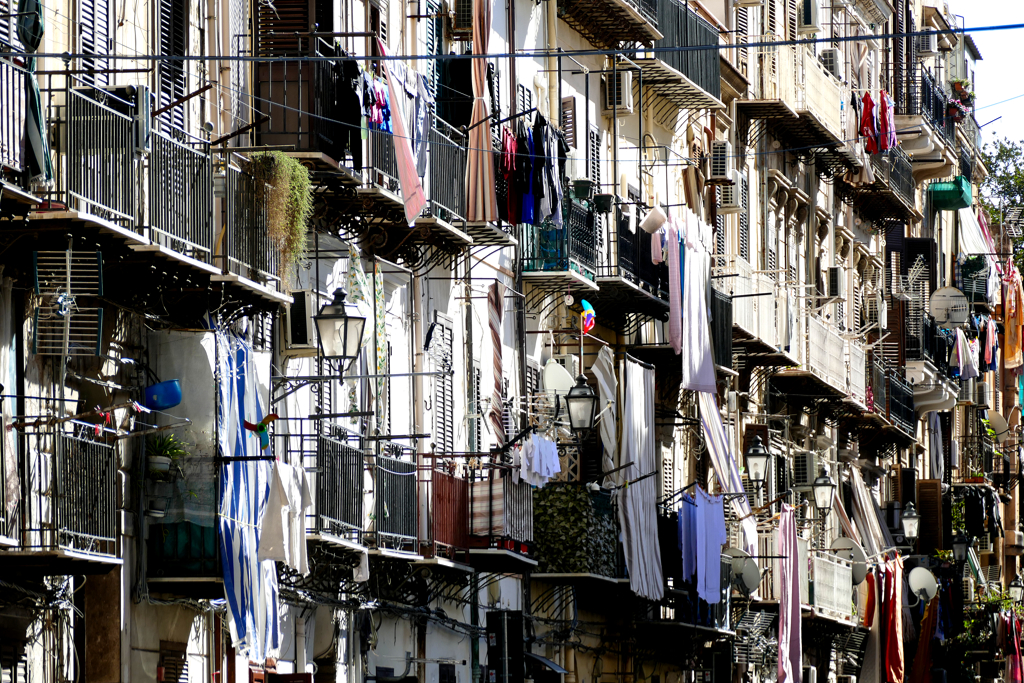
By the 19th and early 20th centuries, the neighborhood had fallen into disrepair, becoming one of Palermo’s poorer quarters. Nevertheless, the Kalsa has undergone a significant renaissance and is a vibrant neighborhood that combines historical charm with modern energy. While much of the Kalsa has been revitalized, parts of the neighborhood still face challenges, such as economic inequality and unfinished restoration projects. However, its blend of old-world charm and contemporary culture makes it one of the most fascinating areas in Palermo.
Carlo Testa
Despite careful research, I couldn’t find any information on this artist except for his Instagram account.
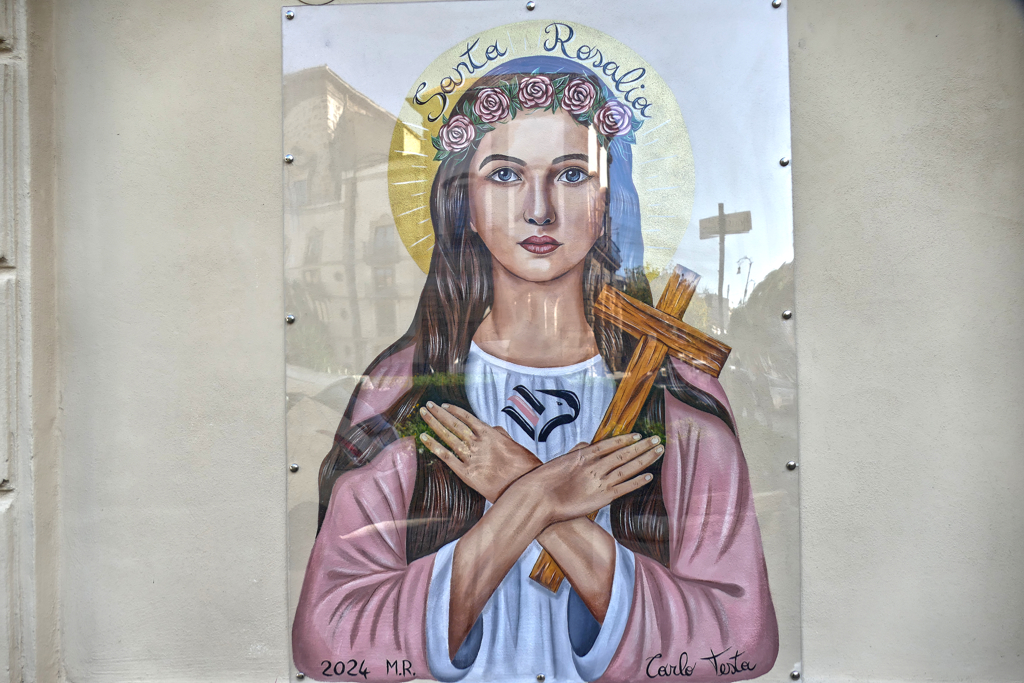
So, if anyone knows more about the creator of this beautiful mural, please let me know!
Basik
Lucio Basik Bolognesi, a trailblazing artist with roots in the graffiti scene since the early ’90s, has embarked on an extraordinary creative journey. In fact, his immense impact on the graffiti world was recognized when Aelle, a renowned specialized magazine, crowned him one of the top three most influential graffiti artists in the country.
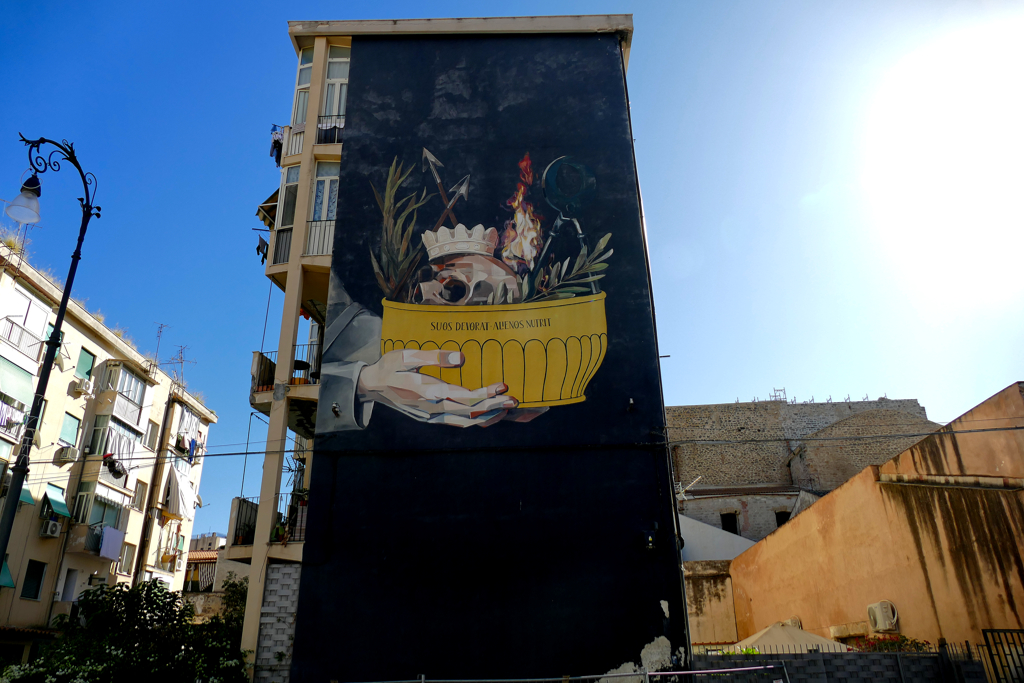
The golden pot carries in fact Santa Christina of Bolsena’s, Santa Ninfa’s, Santa Olivia’s, Santa Agatha’s, and obviously Santa Rosalia’s symbols as known from their iconic depiction,
Starting with the raw energy of spray paint, he has gradually expanded his repertoire to include a wide range of media. His recent figurative masterpieces, particularly focused on the expressive language of hand gestures, are brimming with references to popular culture, religious iconography, and rich symbolism. Today, he masterfully fuses his graffiti heritage with inspirations drawn from the grandeur of Medieval and Renaissance art. This makes Basik’s work a fascinating feast for the eyes,
In 2007, he participated in the collective exhibition Street Art Sweet Art at Milan’s Contemporary Art Pavilion PAC, which was a pivotal event that solidified the street art movement in Italy.
Today, Basik is based in Rimini. However, his artistry knows no borders as he’s exhibiting in cities like Berlin, London, Los Angeles, Milan, and San Francisco, to name just the most important ones.
Giulio Gebbia aka Rosk
Giulio Gebbia, also known as Rosk, is a Sicilian-born artist whose work spans various genres, from hyperrealism to surrealism, showcasing exceptional technical mastery in each stroke. Born in 1988 in the Caltanissetta province, he pursued his studies at the Academy of Fine Arts in Palermo. Gebbia was part of the artist duo Rosk&Loste alongside fellow student Mirko Cavallotto, a collaboration that further solidified his artistic presence.
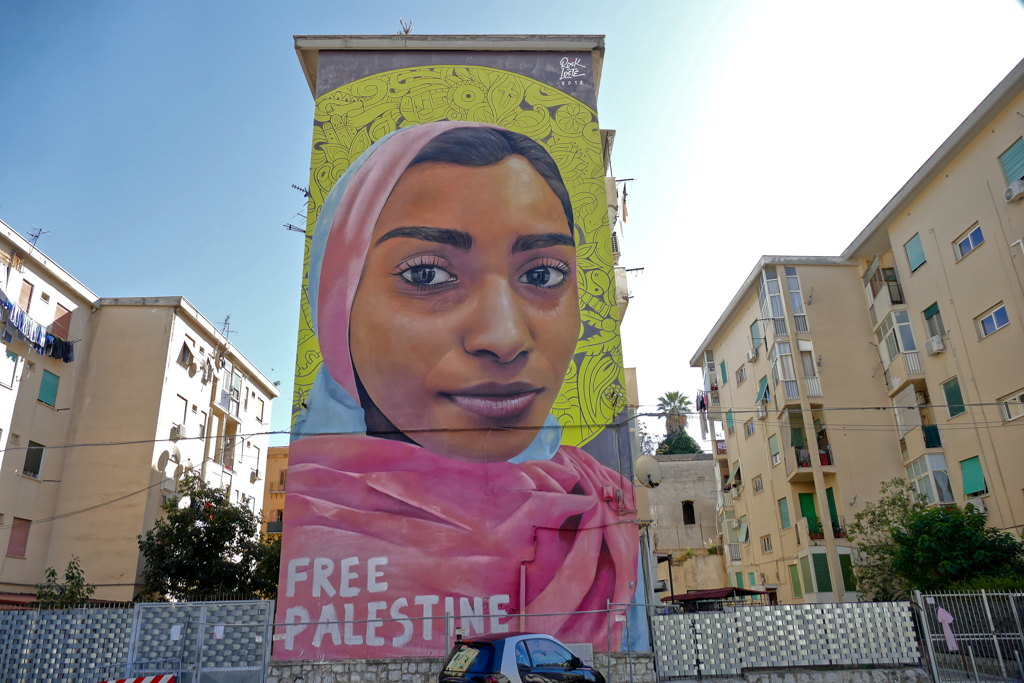
The halo behind the girl’s head makes her an urban saint.
His iconic murals have adorned urban landscapes around the world in cities like Bristol, Mexico City, Miami, Milan, New York, Paris, and Rio de Janeiro, to name just the most important ones. Gebbia’s art is highly regarded, with commissioned works for prominent international brands such as Averna, Axa, Ceres, Gucci, and SEAT. His ability to merge advertising with fine art is evident in his commissions.
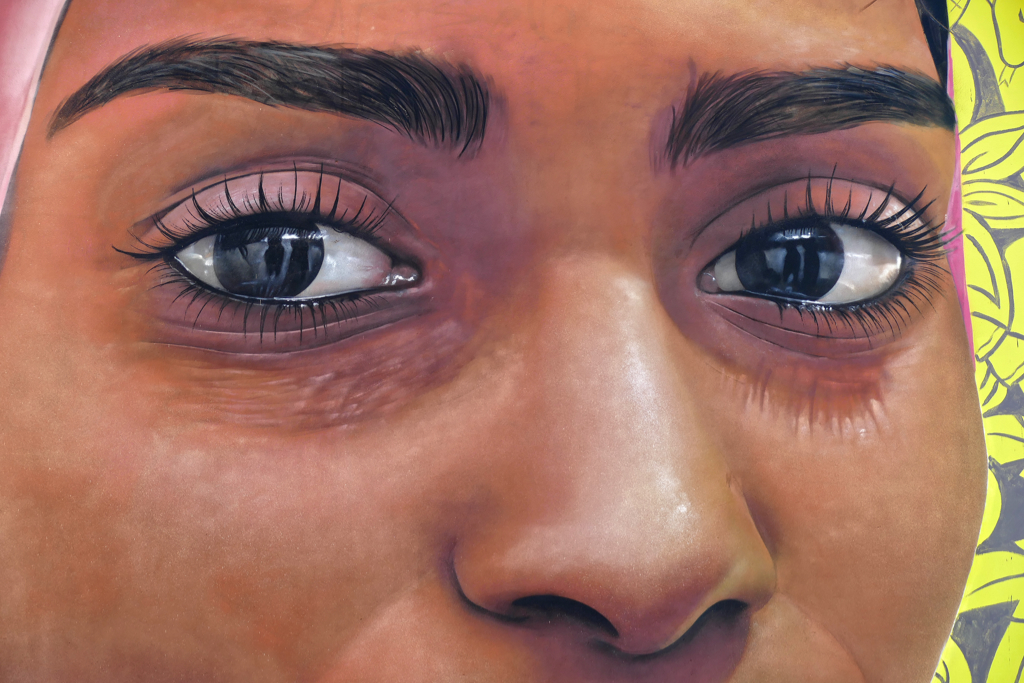
However, Gebbia’s work often carries social and cultural significance. Also, his murals in the urban peripheries focus on the redevelopment of neglected areas through artistic expression.
Mirko Cavallotto aka Loste
And here we are with the other half of the artist duo Rosk&Loste, namely Mister Mirko Cavallotto aka Loste. Just like his partner in crime art, he hauls from Caltanissetta. After graduating from the prestigious Academy of Fine Arts in Palermo in 2012, Loste has dedicated himself to the daily practice of perfecting his craft. His unrelenting pursuit of detail and mastery of spray techniques have helped him shape a unique figurative style that captivates and amazes.
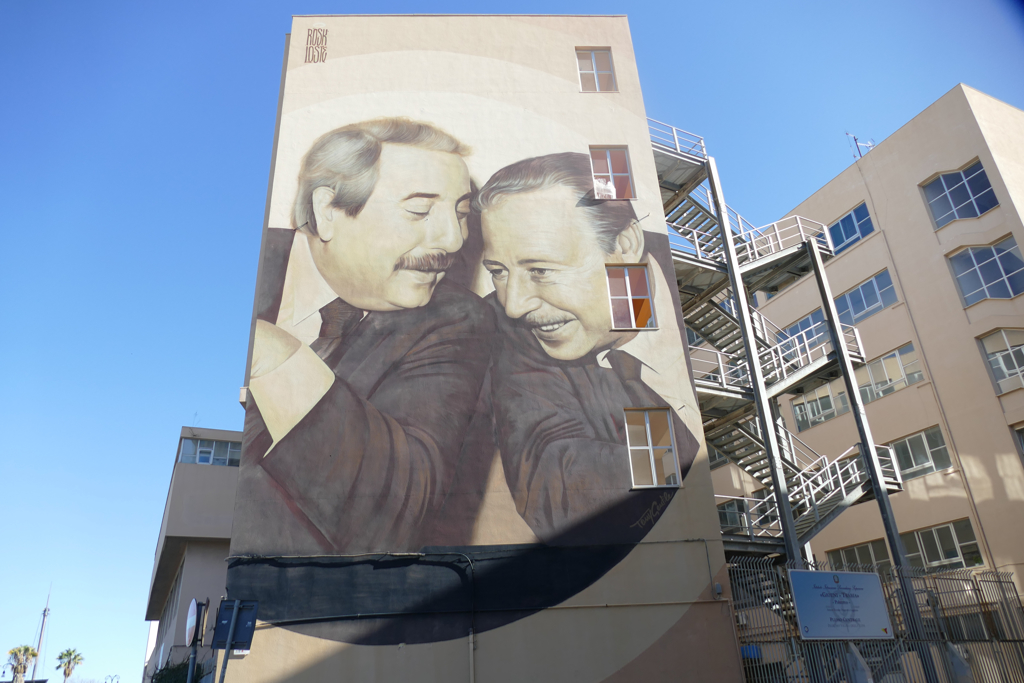
What sets Loste apart is his ability to blend meticulous precision with a deep, poetic essence in every piece he creates. Over the past 15 years, he has become a true street art icon, collaborating with some of the world’s most celebrated artists and major international brands. His murals, which breathe life into public spaces, continue to awe audiences everywhere. Loste proves that his art is not just about spray cans and walls—it’s a celebration of culture, passion, and innovation!
Camilla Falsini
First things first: It’s a shame that Camilla Falsini is the only woman on this list. There’s still a long way to go, ladies!
Camilla Falsini is an enchanting artist and illustrator from Rome. After completing classical studies and a diploma in illustration at the renowned IED in Rome, Camilla embarked on an artistic journey of illustration.
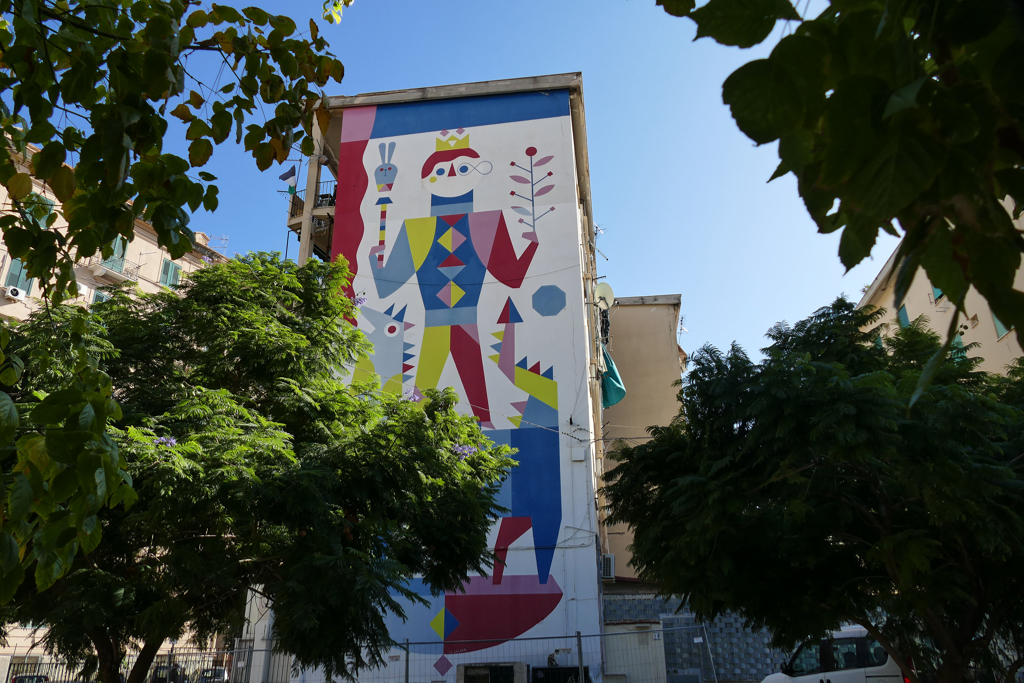
Her creations are a combination of clear lines, minimalist shapes, and vibrant colors. From editorial illustrations to expansive murals, from objects to books, her designs captivate audiences across a spectrum of mediums.
Camilla’s talent has earned her commissions from leading publishing houses. She illustrated books, magazines, and newspapers. However, she also creates paintings, murals, installations, and sculptures.
Between 2023 and 2026, Camilla will showcase her magnificent inflatable installations in the highly anticipated Let’s Fly exhibition. This extraordinary show is curated by the Balloon Museum in Los Angeles and will tour various cities in the USA.
Camilla Falsini has participated in group exhibitions at the Milan Triennale, the MACRO in Rome, and MADRE in Naples. In addition, she had solo exhibitions in Ravenna, Florence, and Bologna.
Her passion for street art has seen her murals adorn the walls of Italian cities. In addition, her indoor creations, such as the stunning mural at Milan’s Madama Hostel and various murals in private homes, schools, and offices, bring some much-appreciated artistry to spaces. With each brushstroke, Camilla Falsini invites us into a world where color, form, and imagination collide in the most enchanting ways.
Never Forget: Portraits of Palermo’s Heros
You’ve probably already noticed: it’s virtually impossible to experience Palermo without being constantly and often unexpectedly reminded of the mafia’s machinations. And that brings us straight to the Muro della Legalità.
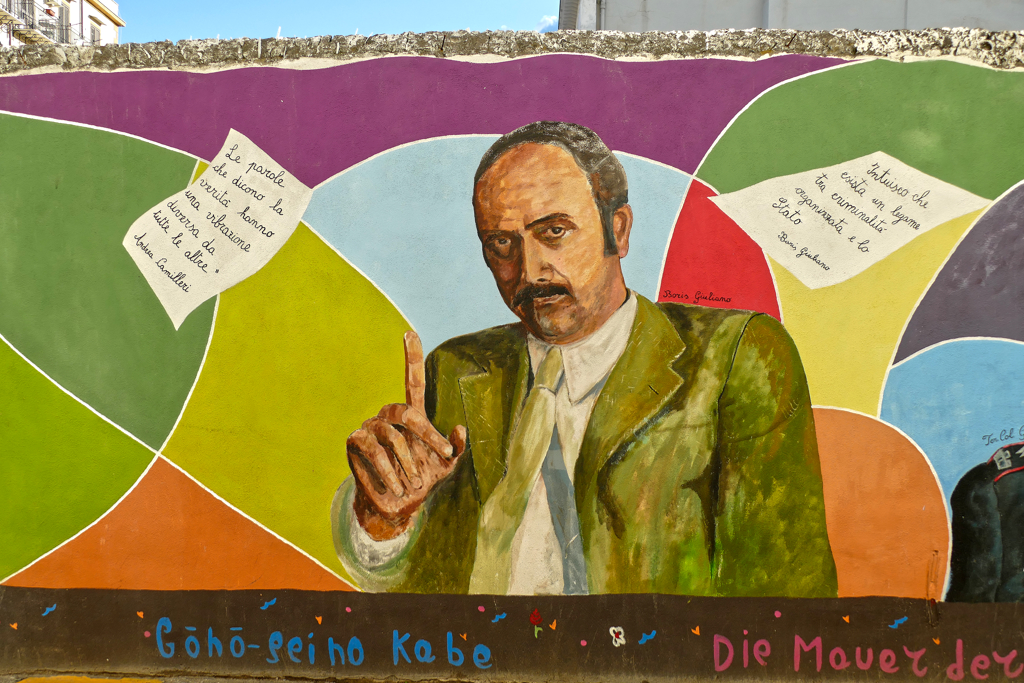
This so-called Wall of Legality in English is a moving piece of street art that came to life in July 2022. Stretching an impressive 65 meters in length, this stunning mural at Piazza degli Aragonesi holds the title of Italy’s longest tribute to justice and resilience, obviously.
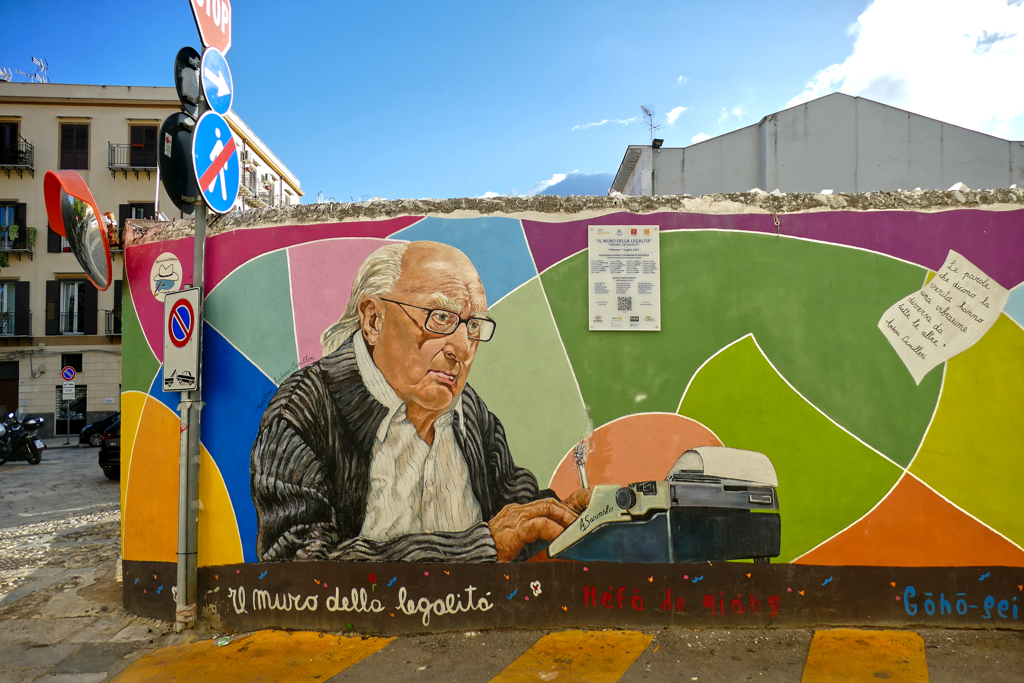
The mural celebrates 38 extraordinary individuals who dedicated their lives to fighting the mafia and championing justice. From magistrates and law enforcement officers to cultural icons like Paolo Borsellino, Andrea Camilleri, Giovanni Falcone, and Leonardo Sciascia, these heroes are immortalized in vivid portraits in bold colors.
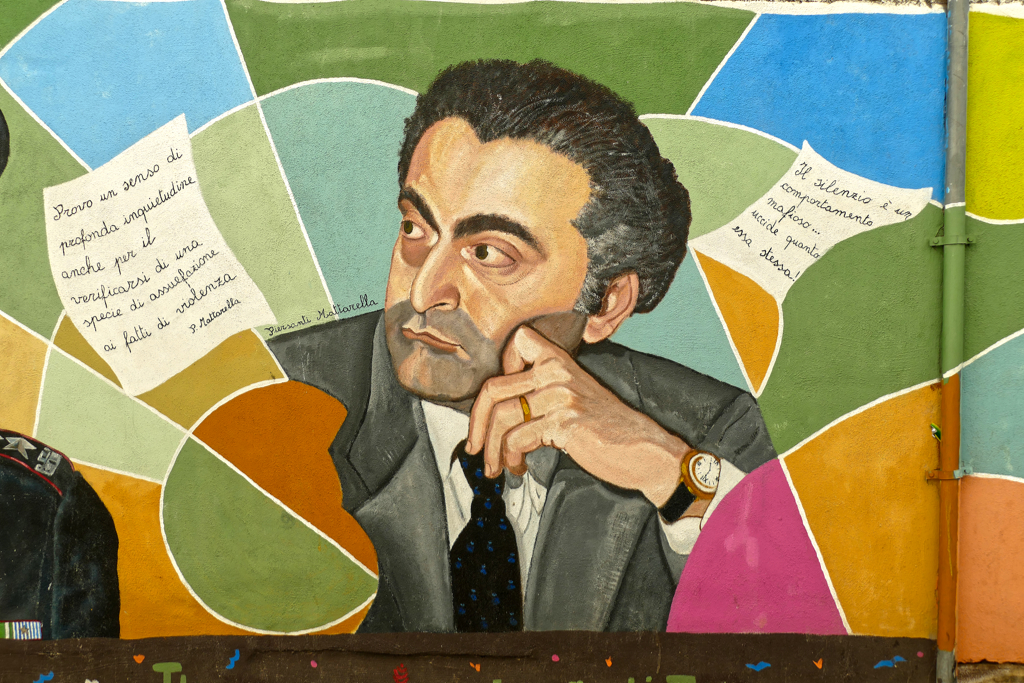
Brought to life by the creativity of 19 talented artists, this project transforms a simple wall into a radiant symbol of hope and courage. It’s a vibrant beacon of hope that justice prevails and a heartfelt homage to those who paved the way.
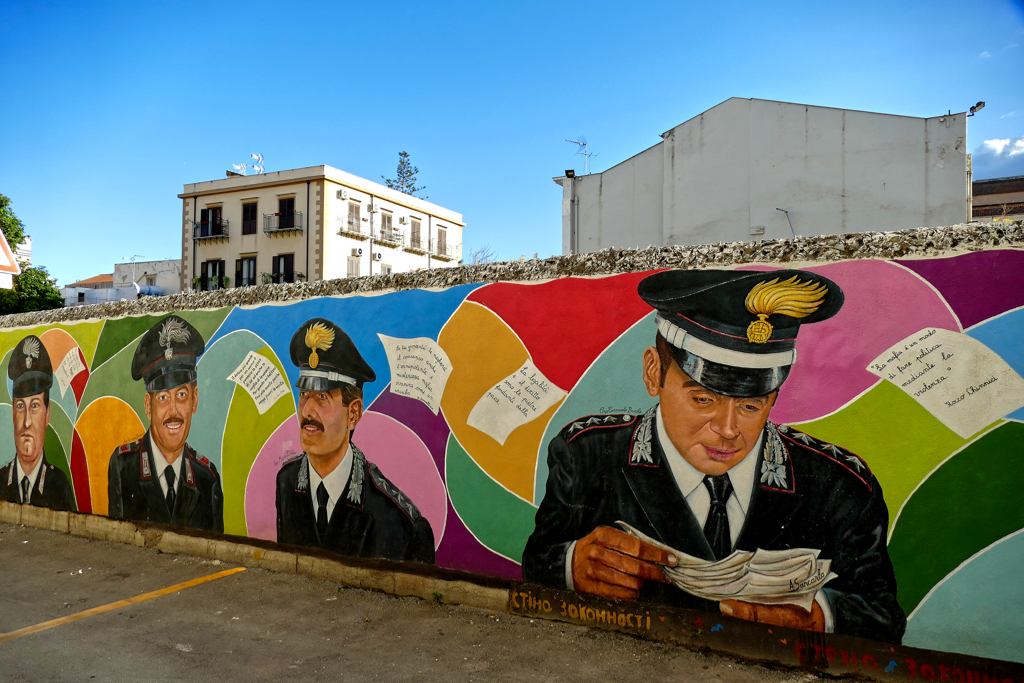
This wall combines art, history, and social activism for a better future without corruption and violence. It is another impressive proof of the development of a city that was severely affected by the mafia.
My Tip
If you want to learn what impact the Mafia had on the lives of ordinary people, far from the often eerily fascinating and almost glamorous narrative of The Godfather and other blockbusters, I highly recommend the charming series The Mafia Only Kills in Summer. In two seasons, the series follows the fortunes and mostly misfortunes of the Giammaresi family in Palermo. The story is heartfelt, very funny, terribly sad, exciting, and very, very human.
On Instagram
To dig deeper into the subject and see more of the amazing art the above-featured artists have created, you can just check out their Instagram accounts:
Lucio Bolognesi aka Basik
Andrea Buglisi
Mirko Cavallotto aka Loste
Angelo Crazyone
Antonio Curcio
Camilla Falsini
Giulio Gebbia aka Rosk
Ema Jons
Yuri Romagnoli
Igor Scalisi Palminteri
Vincenzo Suscetta
Carlo Testa
Twenty Three
How to Get Around
Palermo has an extensive network of buses, four tram lines, and local trains, and Google Maps will show you all the routes. What Google doesn’t know, however, is that the schedules are fundamentally never correct due to crazy driving and terrible traffic jams. While you can still see which bus route goes to where, you can only use the indicated times as a guideline.
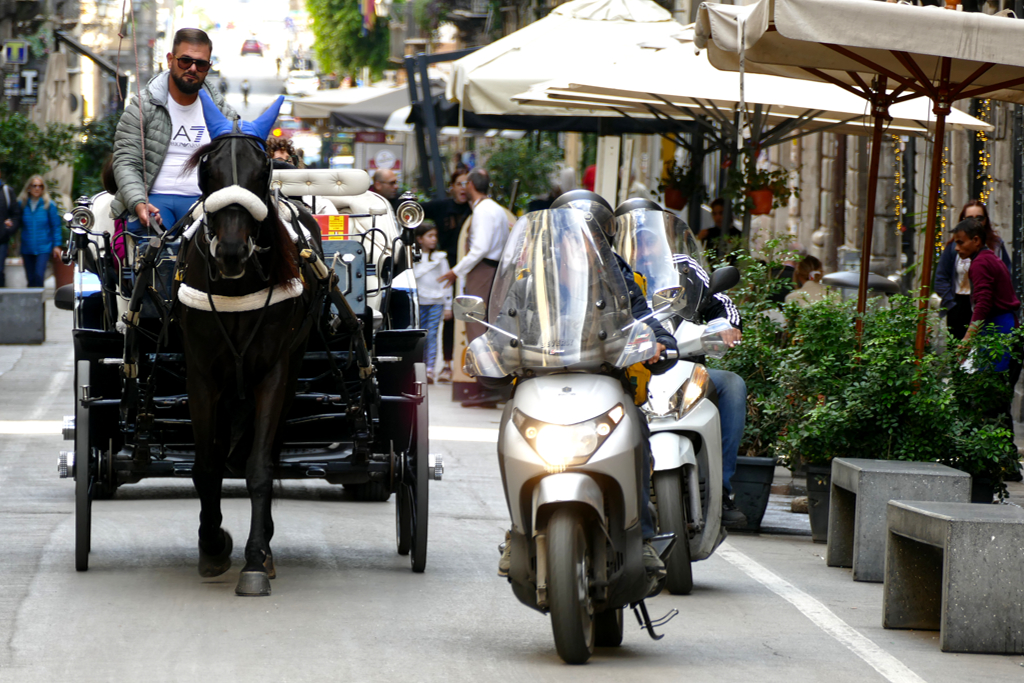
You can buy tickets for 1.40 euros in the Tabacchi shops and at the kiosk in front of Palermo Centrale train station. Once in the vehicle, you must validate it at a small machine. Many carriages now have modern readers that allow you to pay for your ticket contactlessly. However, in this case you pay €1.80.
Obviously, you can explore the two-kilometer-long Via Vittorio Emanuele as well as the Kalsa neighborhood by walking. Although there is a city bike system in Palermo, I would not really recommend this option. While you can cycle undisturbed along the Via Roma or on the Foro Italico Umberto I along the waterfront, cycling on narrower side streets can quickly become a drag. Palermo is also not entirely flat, but I would see the streets clogged with pedestrians and cars as the biggest obstacle.
Map
This map should help you find the murals I’m introducing in this post.
Clicking on the slider symbol at the top left or the full-screen icon at the top right will display the whole map including the legend.
Looking for urban art was only one of the awesome things I got to do during my visit to mesmerizing Palermo. In my post Best Things to Do in Two Days in PALERMO, I take you on a comprehensive city tour.
Pinnable Pictures
If you choose to pin this post for later, please use one of these pictures:
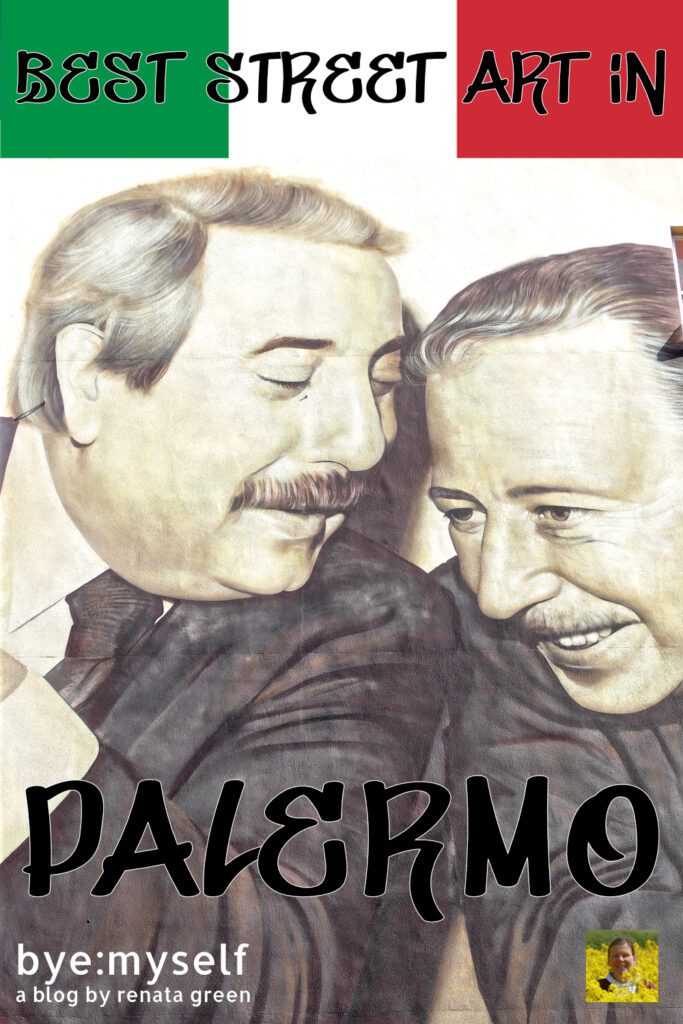
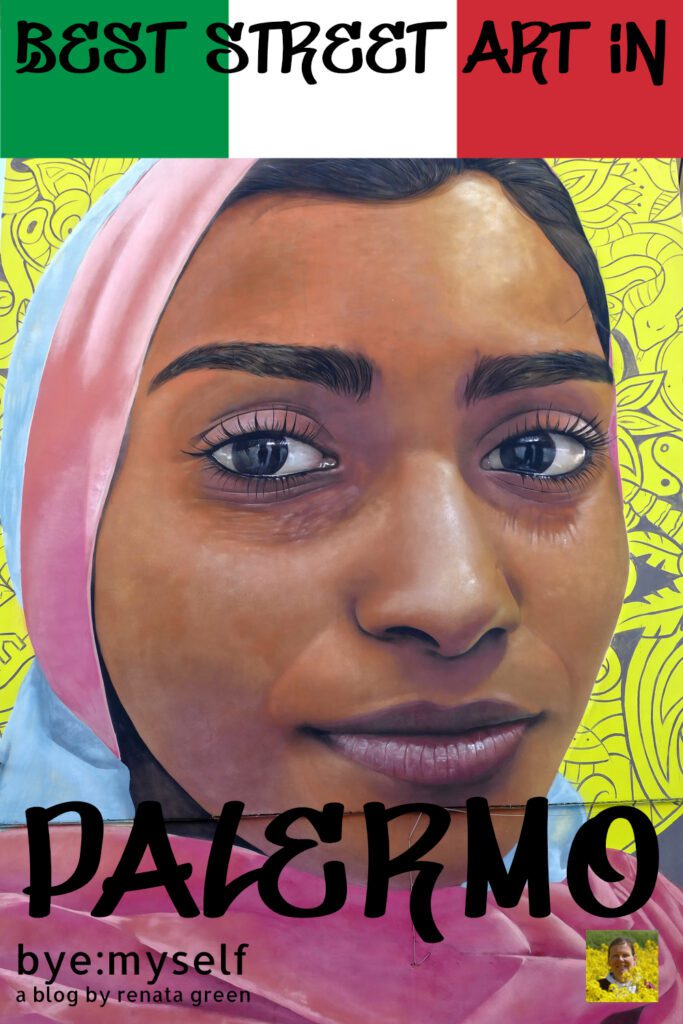
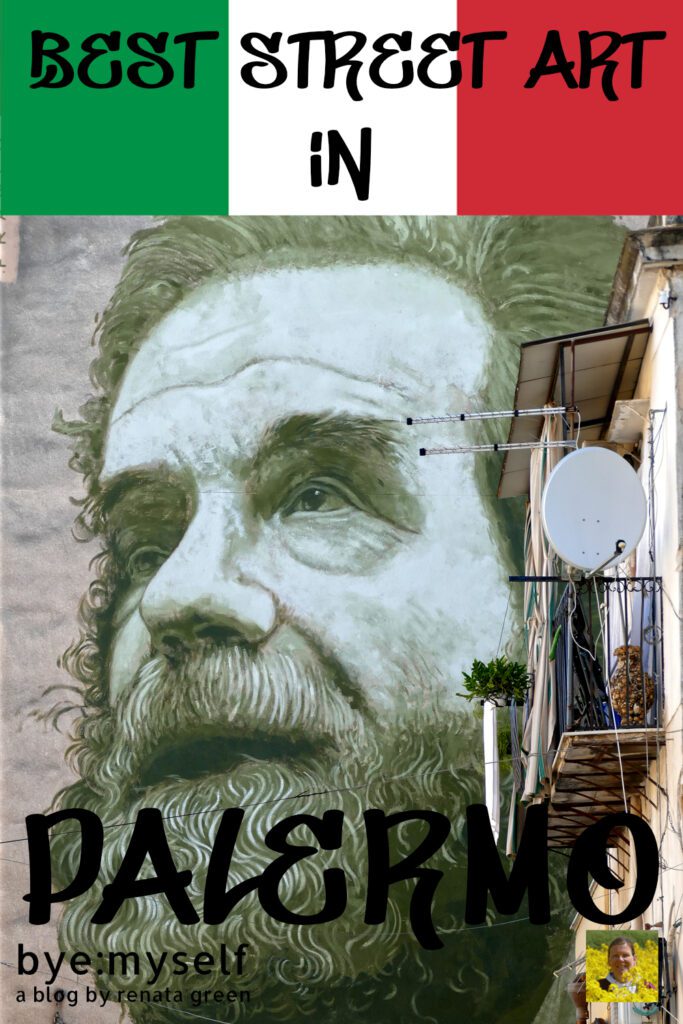
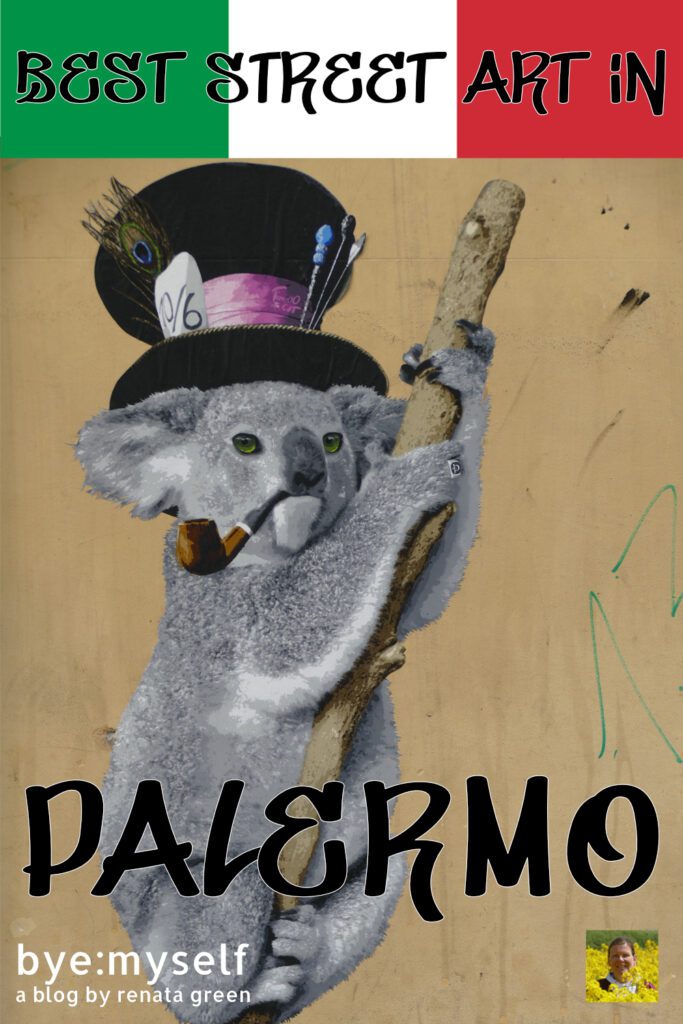

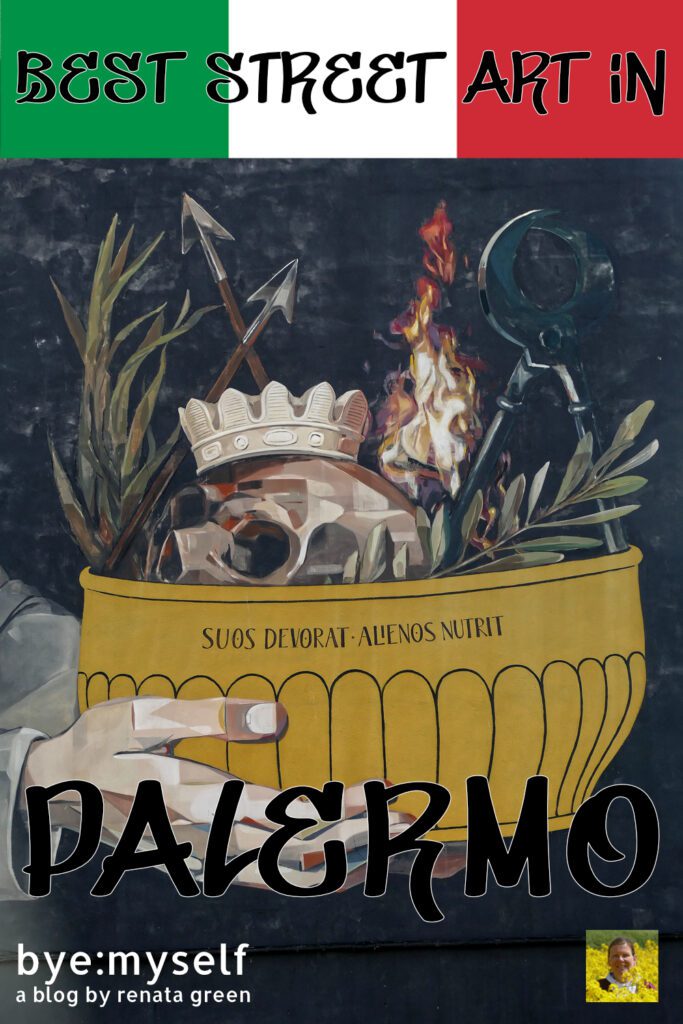
Did You Enjoy This Post? Then You Might Like Also These:
BORDEAUX: Best Street Art on the Left Bank of the Garonne
Best Street Art in VIENNA
Best Street Art in PORTO
Street Art in SEVILLE: Arte Para Todos in the San Pablo District
Best Street Art in FRANKFURT
One Day in NÎMES – What Not to Miss in the Most Roman City of France
Best Street Art in HAMBURG
JIDAR Street Art Festival – How Rabat Celebrates International Urban Art
* This is an affiliate link. If you book through this page, not only do you get the best deal. I also get a small commission that helps me run this blog. Thank you so much for supporting me!
